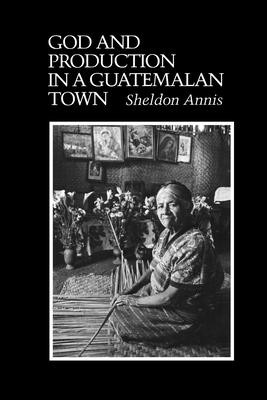
- We will send in 10–14 business days.
- Author: Sheldon Annis
- Publisher: University of Texas Press
- ISBN-10: 0292727429
- ISBN-13: 9780292727427
- Format: 15.1 x 23 x 1.7 cm, softcover
- Language: English
- SAVE -10% with code: EXTRA
Reviews
Description
Since the late 1970s, Protestantism has emerged as a major force in the political and economic life of rural Guatemala. Indeed, as Sheldon Annis argues in this book, Protestantism may have helped tip Guatemala's guerrilla war in behalf of the army during the early 1980s.But what is it about Protestantism--and about Indians-- that has led to massive religious conversion throughout the highlands? And in villages today, what are the dynamics that underlie the competition between Protestants and Catholics?Sheldon Annis addresses these questions from the perspective of San Antonio Aguas Calieutes, an Indian village in the highlands of midwestern Guatemala. Annis skillfully blends economic and cultural analysis to show why Protestantism has taken root. The key character in his drama is the village Indian's tiny plot of corn and beans, the milpa, which Annis analyzes as an idea as well as an agronomic productive system. By exploring milpa logic, Annis shows how the economic, environmental, and social shifts of the twentieth century have acted to undercut the colonial creation of Indianness and, in doing so, have laid the basis for new cultural identities.
EXTRA 10 % discount with code: EXTRA
The promotion ends in 12d.06:35:00
The discount code is valid when purchasing from 10 €. Discounts do not stack.
- Author: Sheldon Annis
- Publisher: University of Texas Press
- ISBN-10: 0292727429
- ISBN-13: 9780292727427
- Format: 15.1 x 23 x 1.7 cm, softcover
- Language: English English
Since the late 1970s, Protestantism has emerged as a major force in the political and economic life of rural Guatemala. Indeed, as Sheldon Annis argues in this book, Protestantism may have helped tip Guatemala's guerrilla war in behalf of the army during the early 1980s.But what is it about Protestantism--and about Indians-- that has led to massive religious conversion throughout the highlands? And in villages today, what are the dynamics that underlie the competition between Protestants and Catholics?Sheldon Annis addresses these questions from the perspective of San Antonio Aguas Calieutes, an Indian village in the highlands of midwestern Guatemala. Annis skillfully blends economic and cultural analysis to show why Protestantism has taken root. The key character in his drama is the village Indian's tiny plot of corn and beans, the milpa, which Annis analyzes as an idea as well as an agronomic productive system. By exploring milpa logic, Annis shows how the economic, environmental, and social shifts of the twentieth century have acted to undercut the colonial creation of Indianness and, in doing so, have laid the basis for new cultural identities.


Reviews